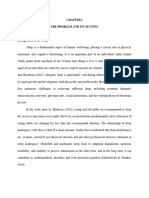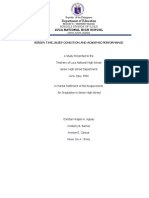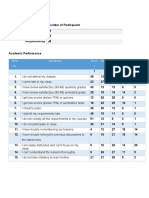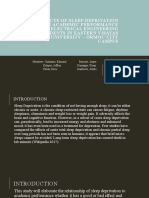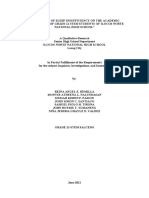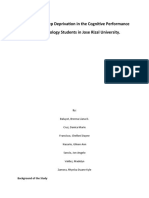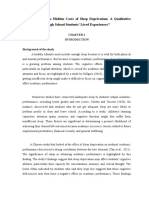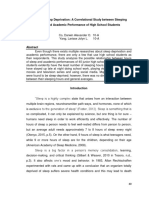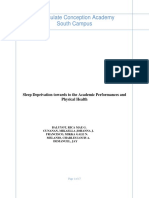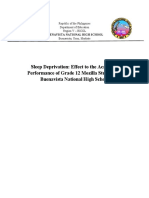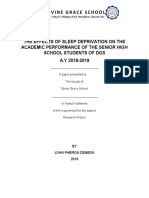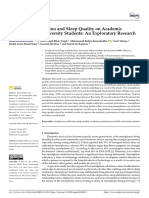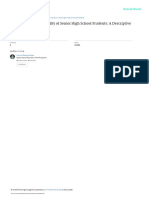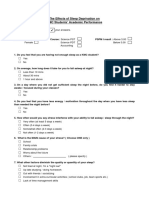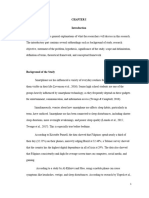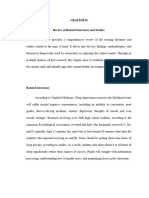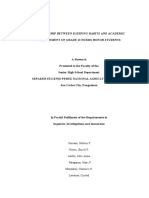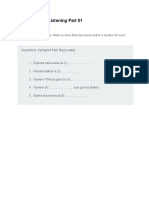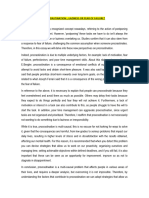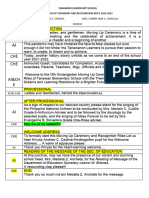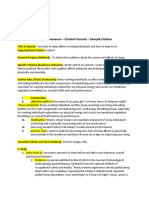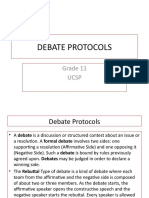0% found this document useful (0 votes)
171 views25 pagesSandy
This document presents a study on the sleeping habits and academic performance of grade 12 Humanities and Social Sciences students at Barobo National High School for the 2022-2023 school year. The study aims to determine the effects of sleeping habits on student performance and examine differences in sleeping habits between male and female students. The study also seeks to understand the relationship between sleeping habits and student behavior. The theoretical framework discusses theories around the impacts of sleep deprivation on cognitive functioning and emotional responses. The conceptual framework illustrates the relationship between input variables like student and teacher factors, and output variables like analyses of how these factors influence academic performance. The study hypothesizes that there is no significant relationship between student sleeping habits and academic performance.
Uploaded by
Yrrech AntipasadoCopyright
© © All Rights Reserved
We take content rights seriously. If you suspect this is your content, claim it here.
Available Formats
Download as DOCX, PDF, TXT or read online on Scribd
0% found this document useful (0 votes)
171 views25 pagesSandy
This document presents a study on the sleeping habits and academic performance of grade 12 Humanities and Social Sciences students at Barobo National High School for the 2022-2023 school year. The study aims to determine the effects of sleeping habits on student performance and examine differences in sleeping habits between male and female students. The study also seeks to understand the relationship between sleeping habits and student behavior. The theoretical framework discusses theories around the impacts of sleep deprivation on cognitive functioning and emotional responses. The conceptual framework illustrates the relationship between input variables like student and teacher factors, and output variables like analyses of how these factors influence academic performance. The study hypothesizes that there is no significant relationship between student sleeping habits and academic performance.
Uploaded by
Yrrech AntipasadoCopyright
© © All Rights Reserved
We take content rights seriously. If you suspect this is your content, claim it here.
Available Formats
Download as DOCX, PDF, TXT or read online on Scribd
/ 25

